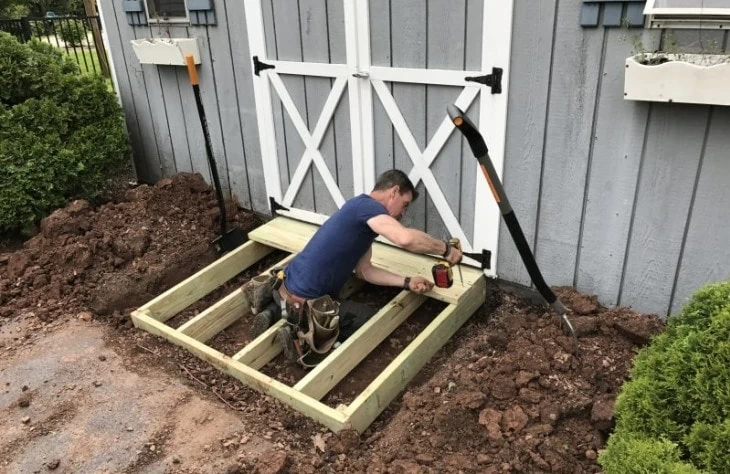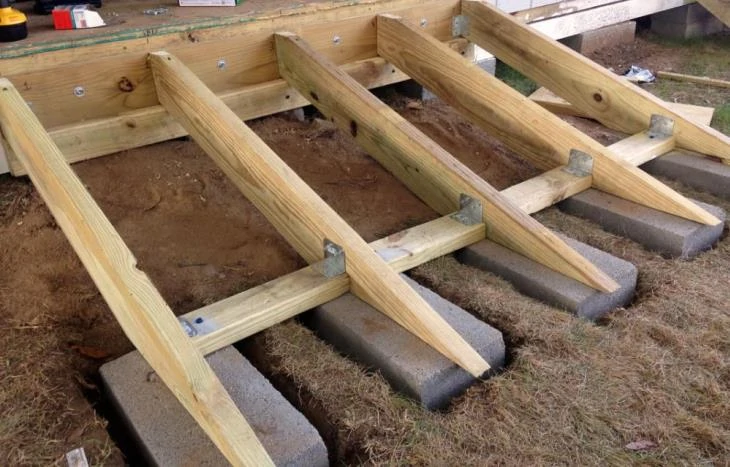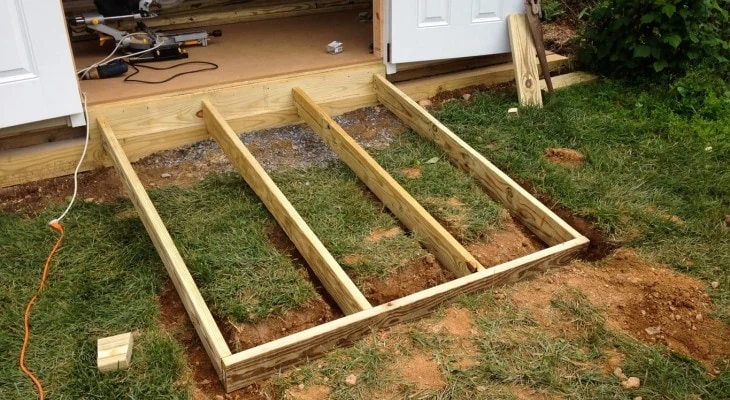A storage shed is a great way to add storage for outdoor equipment. Most sheds are easy to assemble and relatively inexpensive. But, once you add a shed, you need a ramp in order to put your equipment safely away! What if the shed is on an uneven ground? What’s the best way to build a ramp?
Building a shed ramp on an uneven ground requires the ground to either be built up or dug down on either side of the ramp. Often, a combination of these methods is helpful. Take into account the ramp size, ramp slope, the intended purpose of the shed, ramp materials, and safety concerns before you begin your project.
Table of Contents
How to Build a Level Shed Ramp

There are two ways to make up for uneven ground when you build a shed ramp. You can use one of these ideas, or a combination of the two.
Build Up One Side
Use dirt or concrete to elevate the low side of the ground to compensate for the slope of the ground. Don’t worry, I’ll tell you exactly how to calculate the slope in the next section!
Make sure you build up the area gradually, especially if you’re using dirt and grass so that the area is easy to mow and doesn’t pose a tripping hazard.
Dig out the Other Side
You can also dig out the high side of the ground to make the area as level as possible. Again, you want the slope to be as gradual as possible. It may be more work right now, but it will be worth it. It will be much easier to navigate gradual slopes as you do yard work around the shed.
How to Build a Ramp
Building a ramp isn’t as easy as throwing down a couple of boards! It’s important to calculate the slope of the ramp, and take safety into account before you start to build the ramp.
Ramp Size
The slope and size of the ramp are two important factors to consider. The size of the ramp will depend on how you want to use the shed. A tool shed does not require a large, heavy-duty ramp. On the other hand, if you want to drive a tractor into the shed, make sure the ramp is sturdy and wide enough to accommodate the tractor wheels.
The length of the ramp will be determined by your slope calculations. Again, if you want to drive a tractor or other vehicle into the shed, a longer ramp with a shallow rise will be much easier to navigate.
Calculate the Slope
The angle or slope of the ramp is a really important calculation! A steep ramp will be difficult to climb, especially in the winter or if the ramp gets wet and slippery. And, if you want to drive a tractor, mower, or 4×4 up the ramp, the slope should be more gradual.
However, you also don’t want to make the ramp too long and gradual. The minimum recommended rise to run ratio is one inch of rise for every four inches of slope. Typically, a shed ramp slope ratio will be anywhere from 1:4 to 1:8.
A ramp with an 8:1 ratio will be at about a 7 percent angle. This is a more gradual slope, which is ideal for driving. A ramp with a 4:1 ratio will be steeper, with about a 14 percent slope.
Safety Concerns
Obviously, safety is one of the biggest concerns in any construction project! The same is true for your ramp. Make sure that it is strong enough for your intended use.
If you have an uneven ground, make sure you either build up one side of the ground, dig out the other side, or a combination of those two operations. Allow the ground to settle, and make sure you build the ramp on a level, solid foundation.
Material Options

There are a variety of options when you build your ramp! While treated lumber is typically the normal shed material, consider other options such as a composite material, or steel. Concrete blocks are a great way to make a solid, level foundation for the ramp.
The surface of the ramp is also important. A non-slip surface is ideal, especially in the winter. Liquid rubber coating is a great way to make the surface safe. Stripes of anti-slip tape along the ramp are easy to apply. Stair tread grip strips are another option.
Final Thoughts
Make sure your shed ramp is on solid ground by building up the ground or digging out one of the sides of the ramp. A firm foundation, a sturdy ramp, and a level slope will make sure that your ramp serves its purpose and allows you to safely use the shed and ramp for years to come!

